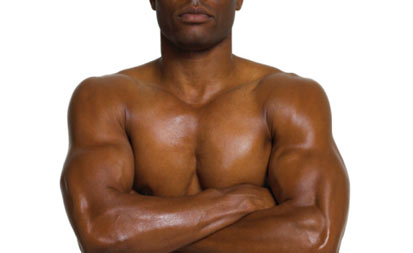
If you happen to have just read The Psychopath Test by Jon Ronson, this article in Slate is appropriately timely, and presents new fodder for continuing research (and a sequel). It would therefore come as no surprise to find Mr.Ronson trekking through Newfoundland in search of “Old Hag Syndrome”, a type of sleep paralysis, visiting art museums in Italy for “Stendhal Syndrome,” a delusional disorder experienced by Italians after studying artistic masterpieces, and checking on Nigerian college students afflicted by “Brain Fag Syndrome”. Then there is: “Wild Man Syndrome,” from New Guinea (a syndrome combining hyperactivity, clumsiness and forgetfulness), “Koro Syndrome” (a delusion of disappearing protruding body parts) first described in China over 2,000 years ago, “Jiko-shisen-kyofu” from Japan (a fear of offending others by glancing at them), and here in the west, “Muscle Dysmorphia Syndrome” (a delusion common in weight-lifters that one’s body is insufficiently ripped).
All of these and more can be found in the latest version of the DSM-IV (Diagnostic and Statistical Manual of Mental Disorders, Fourth Edition) manual.
[div class=attrib]From Slate:[end-div]
In 1951, Hong Kong psychiatrist Pow-Meng Yap authored an influential paper in the Journal of Mental Sciences on the subject of “peculiar psychiatric disorders”—those that did not fit neatly into the dominant disease-model classification scheme of the time and yet appeared to be prominent, even commonplace, in certain parts of the world. Curiously these same conditions—which include “amok” in Southeast Asia and bouffée délirante in French-speaking countries—were almost unheard of outside particular cultural contexts. The American Psychiatric Association has conceded that certain mysterious mental afflictions are so common, in some places, that they do in fact warrant inclusion as “culture-bound syndromes” in the official Diagnostic and Statistical Manual of Mental Disorders.
he working version of this manual, the DSM-IV, specifies 25 such syndromes. Take “Old Hag Syndrome,” a type of sleep paralysis in Newfoundland in which one is visited by what appears to be a rather unpleasant old hag sitting on one’s chest at night. (If I were a bitter, divorced straight man, I’d probably say something diabolical about my ex-wife here.) Then there’s gururumba, or “Wild Man Syndrome,” in which New Guinean males become hyperactive, clumsy, kleptomaniacal, and conveniently amnesic, “Brain Fag Syndrome” (more on that in a moment), and “Stendhal Syndrome,” a delusional disorder experienced mostly by Italians after gazing upon artistic masterpieces. The DSM-IV defines culture-bound syndromes as “recurrent, locality-specific patterns of aberrant behavior and troubling experience that may or may not be linked to a particular diagnostic category.”
And therein lies the nosological pickle: The symptoms of culture-bound syndromes often overlap with more general, known psychiatric conditions that are universal in nature, such as schizophrenia, body dysmorphia, and social anxiety. What varies across cultures, and is presumably moulded by them, is the unique constellation of symptoms, or “idioms of distress.”
Some scholars believe that many additional distinct culture-bound syndromes exist. One that’s not in the manual but could be, argue psychiatrists Gen Kanayama and Harrison Pope in a short paper published earlier this year in the Harvard Review of Psychiatry, is “muscle dysmorphia.” The condition is limited to Western males, who suffer the delusion that they are insufficiently ripped. “As a result,” write the authors, “they may lift weights compulsively in the gym, often gain large amounts of muscle mass, yet still perceive themselves as too small.” Within body-building circles, in fact, muscle dysmorphia has long been recognized as a sort of reverse anorexia nervosa. But it’s almost entirely unheard of among Asian men. Unlike hypermasculine Western heroes such as Hercules, Thor, and the chiseled Arnold of yesteryear, the Japanese and Chinese have tended to prefer their heroes fully clothed, mentally acute, and lithe, argue Kanayama and Pope. In fact, they say anabolic steroid use is virtually nonexistent in Asian countries, even though the drugs are considerably easier to obtain, being available without a prescription at most neighborhood drugstores.
[div class=attrib]More from theSource here.[end-div]
